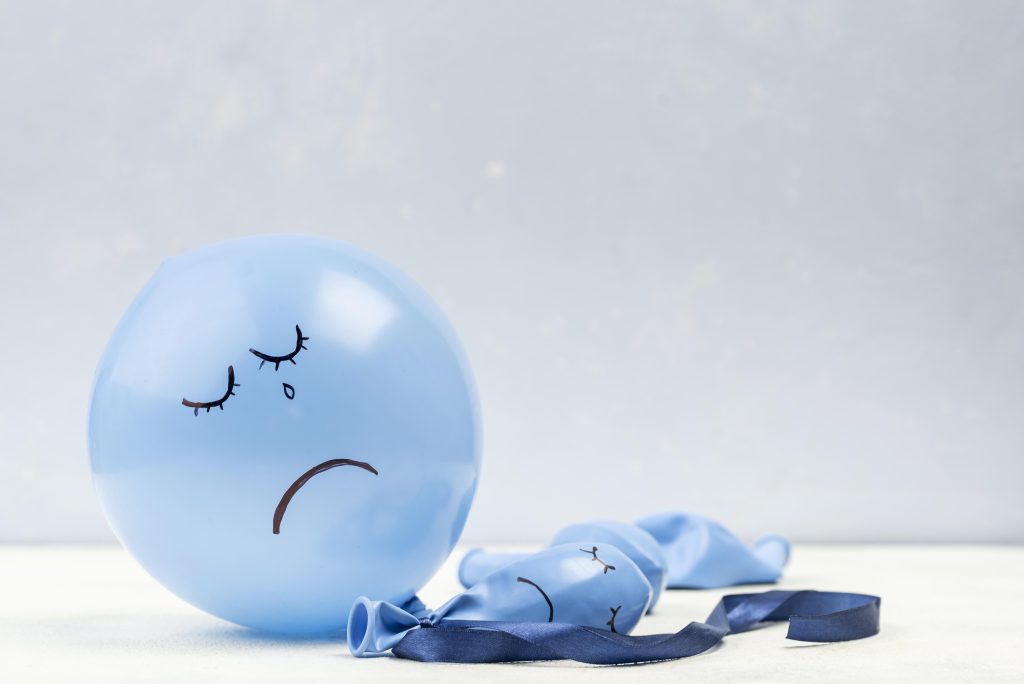
by Don Laird, contributing writer
February is the shortest month on our calendars. However, psychologically it is also the longest month – especially in the shadow of a continuing pandemic. Leafless trees, barren landscapes, minimal sunlight, a low cloud ceiling and frigid temperatures can wear a person down. For some, these environmental factors may produce symptoms of mild depression or anxiety.
Seasonal Affective Disorder, or SAD as it is commonly known, is a form of depression that impacts a person during the same season each year. If you feel depressed in the winter, but your mood and affect improve during the spring and summer months, you may have SAD.
SAD is quite common and can affect anyone, but it is more prevalent in women between the ages of 15 and 60. Anyone who lives in a climate with extended winter months where daylight is at a premium is at risk to develop symptoms associated with SAD. However, first onset symptoms are less likely to occur as you age. In other words, If you don’t experience SAD symptoms before the age of 40 you are unlikely to develop symptoms later in life. Keep in mind, SAD is a type of depression and should not be confused with other forms of clinical depression.
There is no smoking gun to indicate a definitive root cause for SAD. The one apparent link that appears to be most prevalent is lack of sunlight. This may also disturb your sleep-wake cycle and circadian rhythms, and lack of sunlight may account for a drop in the brain chemical serotonin, which is linked to mood.
Some of the symptoms you may experience with SAD include a loss of interest in activities you normally find enjoyable, craving foods high in carbohydrates, such as pasta or bread, weight gain, feelings of sadness, irritability, constant worry, and drowsiness even after a full night’s sleep.
Treatment may involve light therapy. Light therapy works very well for most people diagnosed with SAD, and it is easy to use. Typically, individuals report feeling improvements to mood within two weeks of starting light therapy. Like any other treatment, you must be consistent and use the therapy on a daily basis. Otherwise, results will not be as effective.
Talk therapy has proven just as effective as medications (if not more) in treating SAD. Therapy will help you explore the root causes of your feelings and assist you with managing symptoms. You can also learn new skills and ways of coping in therapy. Medications do not produce either of these effects.
Stay active during the daytime, especially in the morning, by exercising at a moderate level. Walking, swimming, aerobics, and yoga are a great way to start. Use grounding techniques like the “five senses” and deep breathing. Stay hydrated by drinking at least six to eight glasses of water each day. The more you do, the more energy you will gain.
In addition to physical activity, appeal to your creative spirit by journaling, drawing or finding some other artistic endeavor. If you feel as though you are experiencing symptoms of SAD or depression, please consult a therapist or physician.
***
 Don Laird, NCC, LPC, DCC, is a Licensed Professional Counselor with 20 years of experience providing psychotherapy and counseling to adults, teens and couples who are struggling with a wide range of mental health and life issues. Don is a writer and adjunct professor who teaches graduate and undergraduate courses in professional counseling and psychology at Carlow University. Additionally, he facilitates workshops and classes in dreams, creativity, self growth, and stress reduction.
Don Laird, NCC, LPC, DCC, is a Licensed Professional Counselor with 20 years of experience providing psychotherapy and counseling to adults, teens and couples who are struggling with a wide range of mental health and life issues. Don is a writer and adjunct professor who teaches graduate and undergraduate courses in professional counseling and psychology at Carlow University. Additionally, he facilitates workshops and classes in dreams, creativity, self growth, and stress reduction.

